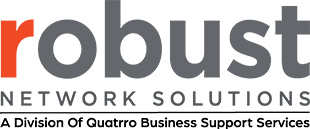Finding your bearings is a tall order in any undertaking. But when it comes to IT compliance, the path ahead can seem even tougher.
Variety is a big part of the problem: compliance rarely looks the same for any two organizations. Even close competitors — or business partners — can have wildly different experiences.
Without a universal rubric, many decision-makers start with road maps. No big surprise there, but it still begs the question: where should your IT compliance journey stop along the way, and where should the goal lie?
What Is IT Compliance?
IT compliance is the process of defining and enforcing organizational rules for operating digital systems. This is an intentionally broad definition because it covers multiple tasks, such as:
- Following internal rules designed to protect proprietary technology and intellectual property
- Adhering to legally mandated frameworks and regulations
- Ensuring your on-premises hardware, cloud strategies, partners, and vendors are also compliant
- Meeting governmental requirements to maintain vendor status
- Implementing proven cybersecurity practices to minimize threat risks
What’s the takeaway? Although the word compliance naturally calls to mind regulatory adherence, following the law is just one important goal. Forming a solid IT compliance plan with Robust can help you achieve everything from boosting consumer confidence to reducing your exposure to legal liability.
Tackling the Major Hurdles: What Does IT Compliance Entail?
Compliance is one domain where the big picture truly matters. But the company-wide perspective isn’t the only one that makes a difference.
Organizations need unified plans but can’t lose sight of the fine-grained distinctions. Your compliance strategy must account for stakeholders with distinct viewpoints, roles, and responsibilities. Keep this in mind as you consider these four essential must-haves:
1. Establish an Ongoing Governance Framework
IT governance reinforces your IT asset management practices with essential structure. It formalizes the steps you take to align your tech investments with your business goals.
Most companies already do this in some form. Many leaders even implement governance intuitively.
IT compliance demands a more rigorous approach. For instance, a digital paper trail might help you fight back if you were fined for a regulatory infraction. There’s no room for a half-hearted outlook: Your governance practices have to generate performance data, create backups for continuity, and help you avoid costly downtime, among other things.
2. Satisfy Industry-specific Compliance Requirements
Different industries must meet distinct compliance rules, and despite often overlapping, these regulations aren’t interchangeable. Here are a few examples:
- The Health Insurance Portability and Accountability Act (HIPAA) covers transferring, accessing, or handling personally identifiable healthcare data. On top of covering caregivers, this law demands compliance from businesses like device manufacturers and electronic health record software vendors.
- The Federal Information Security Modernization Act (FISMA) and later updates ensure the continuity and security of US government data. These laws also apply to vendors, like cloud providers, that sell services to agencies.
- The EU’s General Data Protection Regulation (GDPR) sets out privacy and security standards for personal information. The GDPR only safeguards people in the EU, but be careful! This law applies to any company worldwide that targets or collects data from protected individuals.
- The Payment Card Industry Data Security Standard (PCI DSS) is an industry framework for handling credit card data safely. Though you won’t get fined for falling short, consumers and businesses view PCI compliance as a mark of trust.
These are just some of the regulations that could impact how you handle compliance. When deciding what applies to you, the comprehensive approach is your best bet. Starting with an external assessment of your network infrastructure, cloud assets, vendor partners, and stakeholders is the easiest way to cover your bases.
3. Follow Cybersecurity Best Practices
Cybersecurity lies at the heart of many IT laws. Regulatory landscapes shift with time, but privacy, safety, and threat response are constant concerns.
Cybersecurity can be a major conceptual stumbling block for compliance-minded leaders. Although you know you need to safeguard information, it’s all too easy to fall into the trap of reacting to threats instead of being proactive.
The reality is that cybersecurity works best when it’s integrated — not an afterthought.
Do your network hardware solutions support the latest encryption, or is it time to modernize your infrastructure? Does your manufacturing-floor IoT setup permit easy intervention in the event of hacks? These are the types of questions you need to be asking yourself. A proactive outlook reduces your odds of regulatory scrutiny and makes your security practices more effective.
4. Conduct Consistent Audits
IT compliance audits are vital to finding your footing. They keep you in the know about where you stand and your progress. They help you prove you’ve been following the law. Above all, audits help you quantify and correct your deficiencies before they mutate into irrecoverable errors.
Like other aspects of governance, audits need to be standardized and ongoing. By making auditing a routine part of your schedule, you can shore up your defenses against external threats and insider risks alike.
How to Overcome the Hurdles of IT Compliance
IT compliance demands planning, dedication, and rigorous oversight. There’s no cookie-cutter answer, and a generic approach might leave you worse off than you started.
Don’t assume your road to compliance will shape up exactly as described here. Instead, work with a partner that provides tailor-made solutions geared toward your lasting success. Outsourcing can make governance more cost-effective, reliable, and flexible.
Master compliance no matter what form it takes — and meet your obligations in the days ahead. Reach out to the Robust Network Solutions team for a free consultation.

